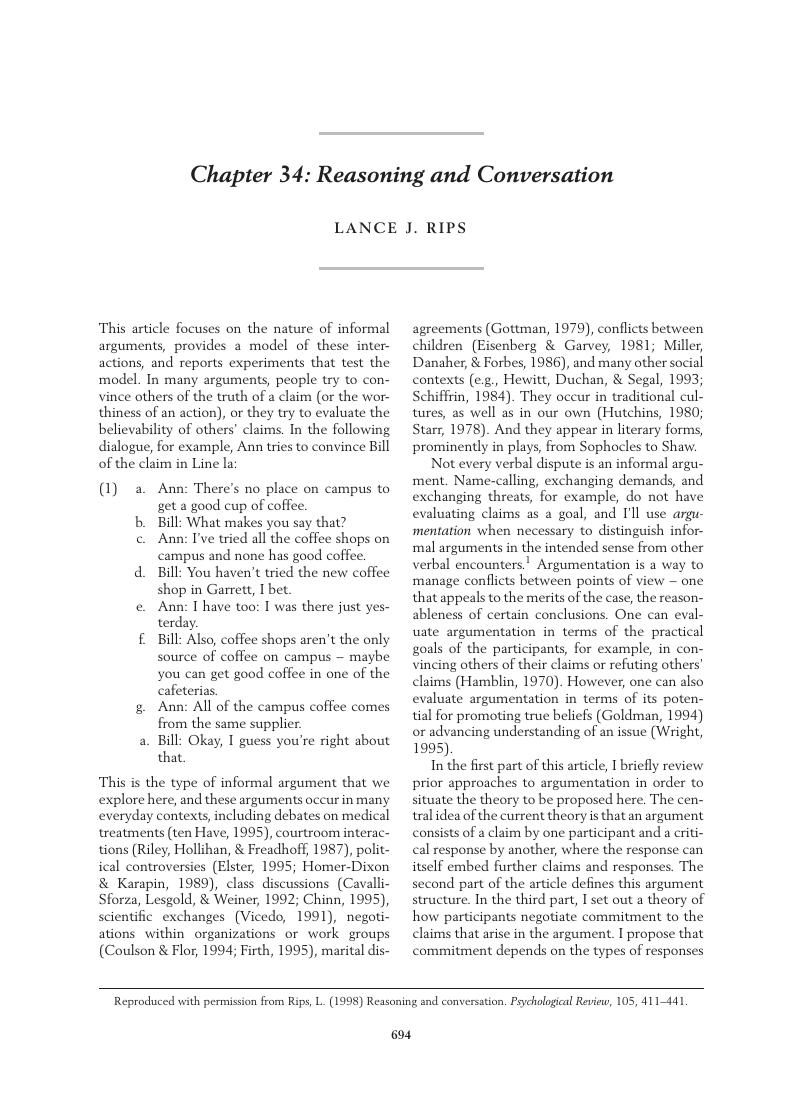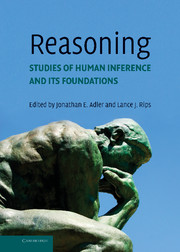Book contents
- Frontmatter
- Contents
- Preface
- List of Contributors
- Introduction: Philosophical Foundations
- PART I FOUNDATIONS OF REASONING
- PART II MODES OF REASONING
- Section 3 Deductive Reasoning
- Section 4 Induction
- Section 5 Dual and Integrative Approaches
- Section 6 Abduction and Belief Change
- Section 7 Causal and Counterfactual Reasoning
- Section 8 Argumentation
- 32 The Layout of Arguments
- 33 The Skills of Argument
- 34 Reasoning and Conversation
- PART II INTERACTIONS OF REASONING IN HUMAN THOUGHT
- Index
- References
34 - Reasoning and Conversation
Published online by Cambridge University Press: 05 June 2012
- Frontmatter
- Contents
- Preface
- List of Contributors
- Introduction: Philosophical Foundations
- PART I FOUNDATIONS OF REASONING
- PART II MODES OF REASONING
- Section 3 Deductive Reasoning
- Section 4 Induction
- Section 5 Dual and Integrative Approaches
- Section 6 Abduction and Belief Change
- Section 7 Causal and Counterfactual Reasoning
- Section 8 Argumentation
- 32 The Layout of Arguments
- 33 The Skills of Argument
- 34 Reasoning and Conversation
- PART II INTERACTIONS OF REASONING IN HUMAN THOUGHT
- Index
- References
Summary

- Type
- Chapter
- Information
- ReasoningStudies of Human Inference and its Foundations, pp. 694 - 730Publisher: Cambridge University PressPrint publication year: 2008



